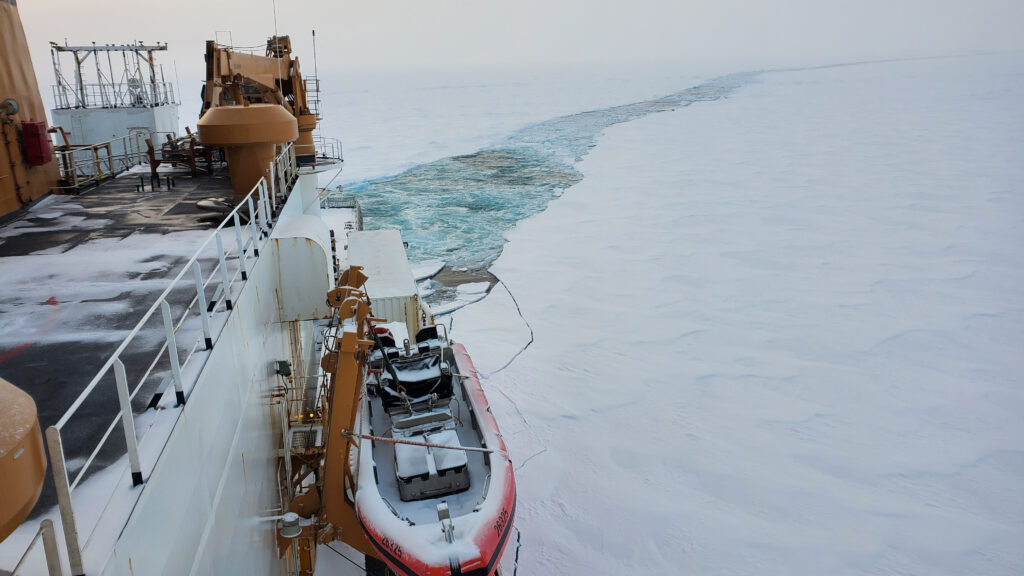
NORTH POLE — The U.S. Coast Guard Cutter Healy (WAGB 20) reached the North Pole Friday after traversing the frozen Arctic Ocean, marking only the second time a U.S. ship has reached the location unaccompanied, the first being Healy in 2015, the Coast Guard Pacific Area said in an Oct. 4 release.
Healy, a medium icebreaker, and crew departed Dutch Harbor, Alaska, Sept. 4, beginning its journey to reach latitude 90 degrees north. The cutter and crew supported oceanographic research in collaboration with National Science Foundation-funded scientists throughout their transit to the North Pole.
This is the third time Healy’s traveled to the North Pole since its commissioning in 1999.
“The crew of Healy is proud to reach the North Pole,” said Capt. Kenneth Boda, commanding officer of the Healy. “This rare opportunity is a highlight of our Coast Guard careers. We are honored to demonstrate Arctic operational capability and facilitate the study of this strategically important and rapidly changing region.”
Healy is currently on a months-long, multi-mission deployment to conduct oceanographic research at the furthest reaches of the northern latitudes. The 420-foot icebreaker is the largest ship in the Coast Guard and is capable of breaking through four-and-half feet of ice at a continuous speed of three knots.
Healy, which departed its Seattle homeport on July 11, currently has thirty-four scientists and technicians from multiple universities and institutions aboard, and nearly 100 active duty crew members.
During the cutter’s first Arctic leg of the patrol throughout July and August, Healy traveled into the Beaufort and Chukchi Seas, going as far north as 78 degrees. As a part of the Office of Naval Research’s Arctic Mobile Observing System program, Healy deployed underwater sensors, sea gliders and acoustic buoys to study Arctic hydrodynamics in the marginal and pack ice zones.
In addition to enabling Arctic science, Healy also supported U.S. national security objectives for the Arctic region by projecting a persistent ice-capable U.S. presence in U.S. Arctic waters, and patrolling our maritime border with Russia.
On its second Arctic mission of the summer, while transiting to the North Pole, Healy embarked a team of researchers as a part of the Synoptic Arctic Survey (SAS). SAS is an international collaborative research program focused on using specially equipped research vessels from around the world to gather data throughout the Arctic across multiple scientific disciplines. Dr. Carin Ashjian, from the Woods Hole Oceanographic Institution in Massachusetts, is currently serving alongside Dr. Jackie Grebmeier as co-chief Scientists onboard Healy with support from the National Science Foundation.
- KONGSBERG turret delivers firepower to U.S. Marine Corps’ ACV-30 - May 1, 2024
- Kaman’s KARGO UAV Makes First Flight - May 1, 2024
- April 30 Red Sea Update - May 1, 2024



